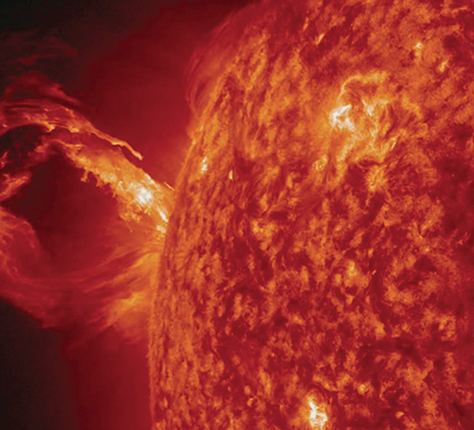The upper atmosphere’s natural thermostat
DOI: 10.1063/PT.3.3516
Occasionally, our sun belches massive plumes of plasma from its corona that stream Earthward. When a fast coronal mass ejection (CME) arrives, it compresses Earth’s magnetosphere and can reconfigure the planet’s magnetic field lines. The reconfiguration enhances electric currents and energizes charged particles. Those currents and particles heat the tenuous atmosphere—hundreds of kilometers in altitude—which then expands outward. Low-orbiting satellites should thus experience more drag. But measurements of their orbital decay reveal that the drag from CMEs isn’t always as great as expected. Researchers led by Delores Knipp (University of Colorado Boulder) now explain why. Under some circumstances, the same CME that heats the upper atmosphere also triggers chemical reactions that quickly cool it. Charged particles with energies greater than about 10 keV split molecular nitrogen, and the free N atoms react with oxygen to produce nitric oxide. The NO molecules, often created in a vibrationally excited state, spontaneously radiate in the IR. The upshot is that they remove energy from the heaving atmosphere and thereby cool and contract it.

NASA/GODDARD/SDO

From an archive of satellite data, the researchers analyzed the IR flux from NO as it responded to nearly 200 isolated CMEs that struck Earth between 2002 and 2014. They found that the fastest CMEs—ones whose speeds exceeded 500 km/s and produced shock waves ahead of the ejected plasma—led to early and copious NO production and emission. The shock-led CMEs transferred so much energy into the upper atmosphere that they generated more than twice the IR flux as non-shock-led storms. Knipp and her colleagues are hopeful their analysis will offer new insights for atmospheric modelers and satellite-drag forecasters trying to plan and track orbits that avoid collisions with space debris. (D. J. Knipp et al., Space Weather, doi:10.1002/2016SW001567
